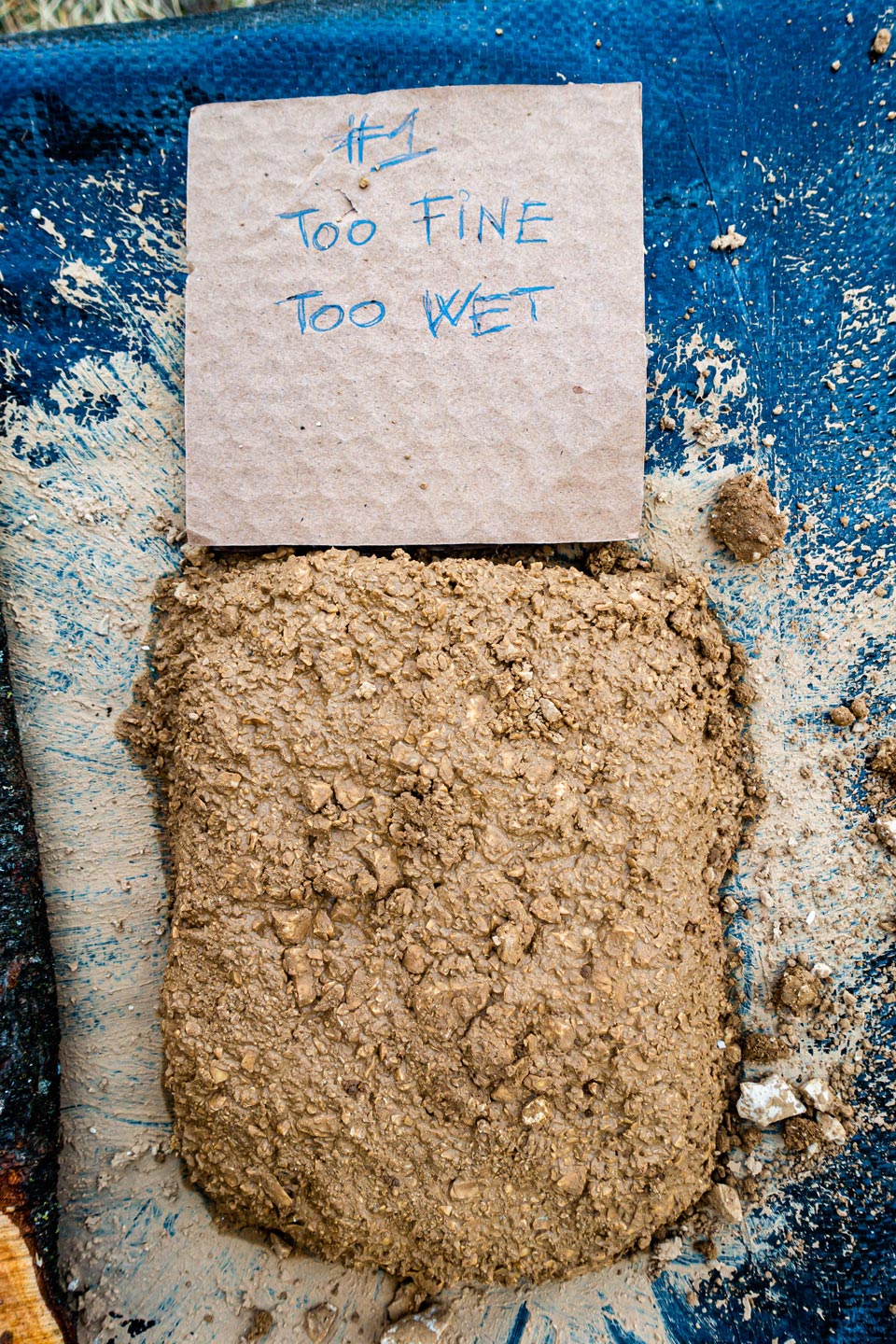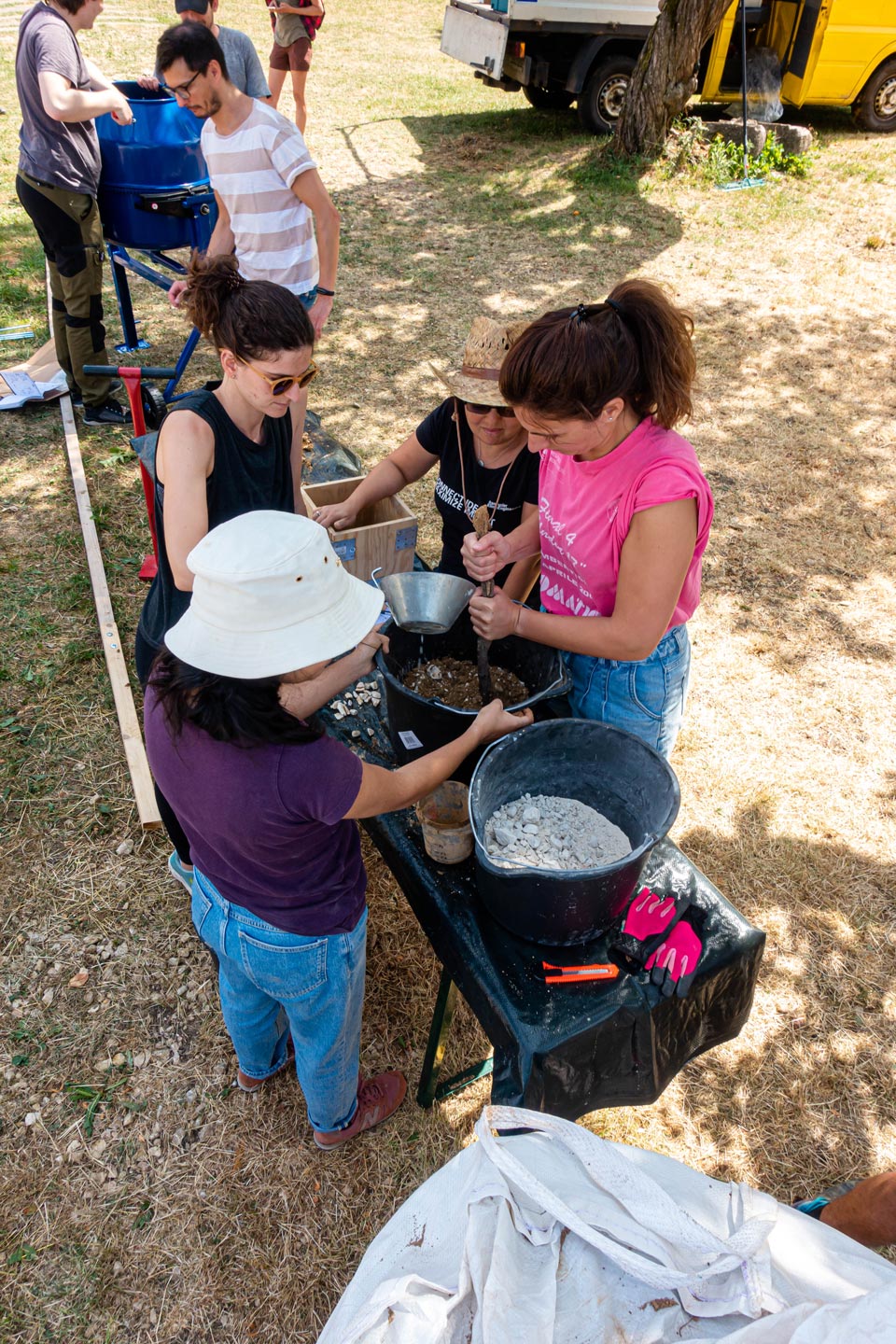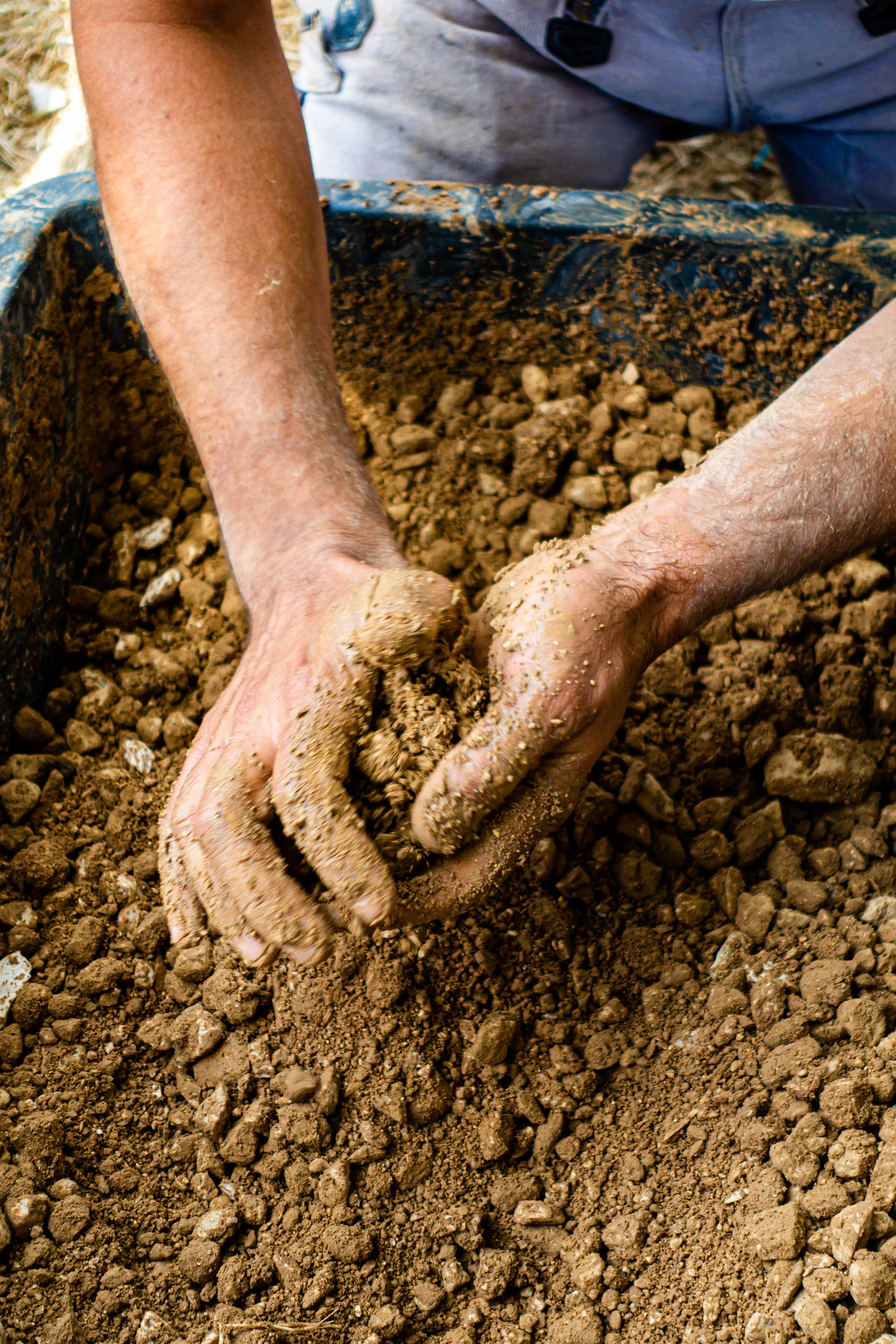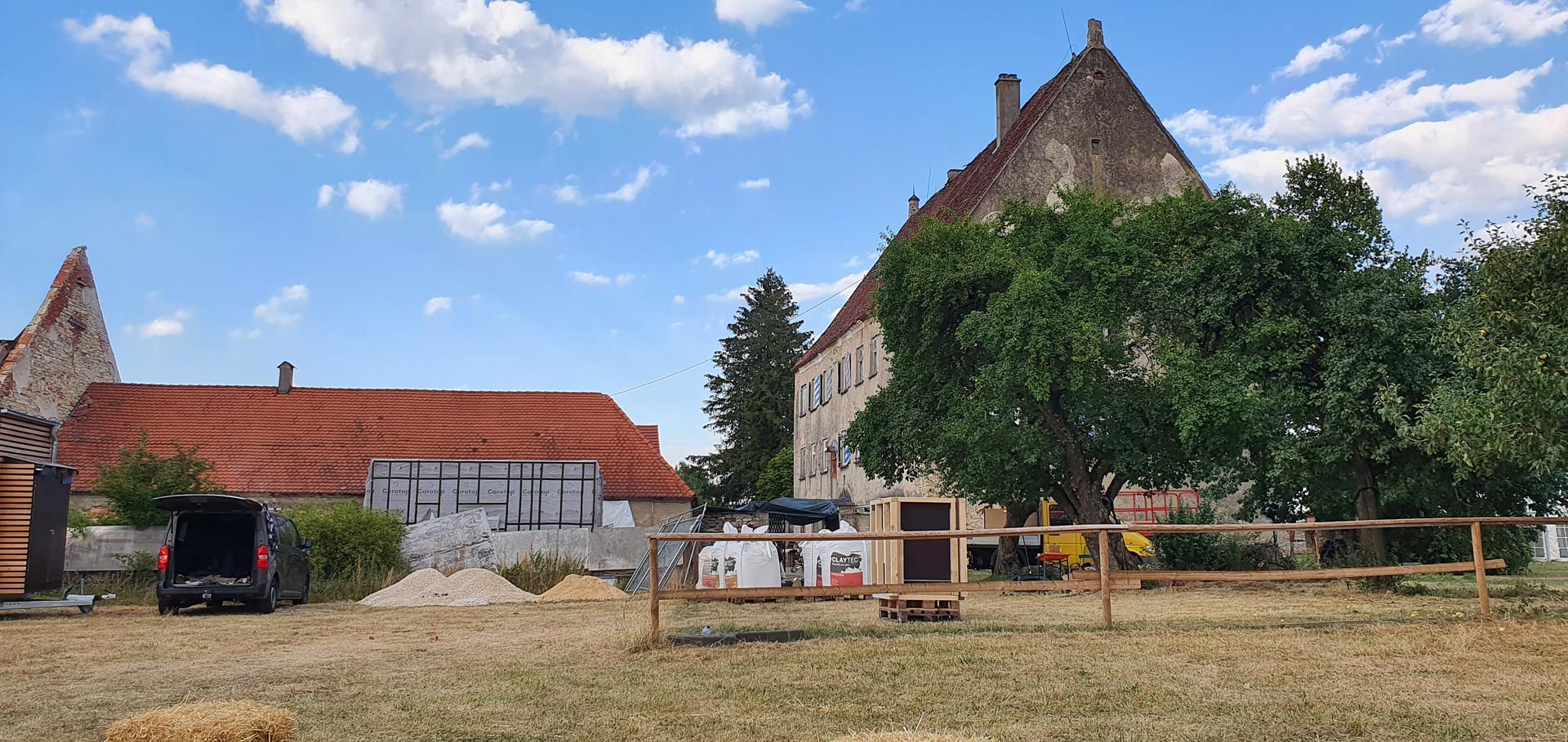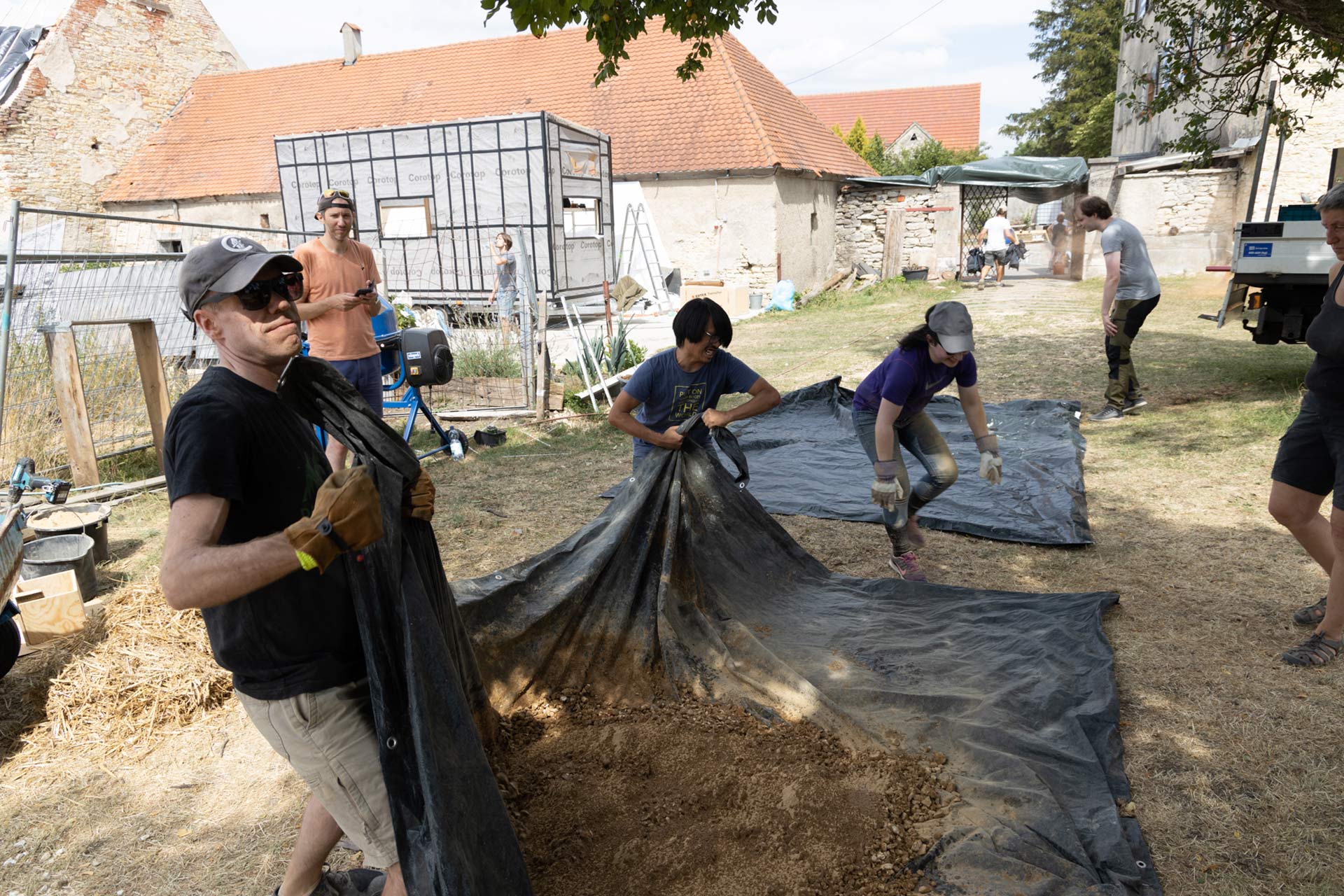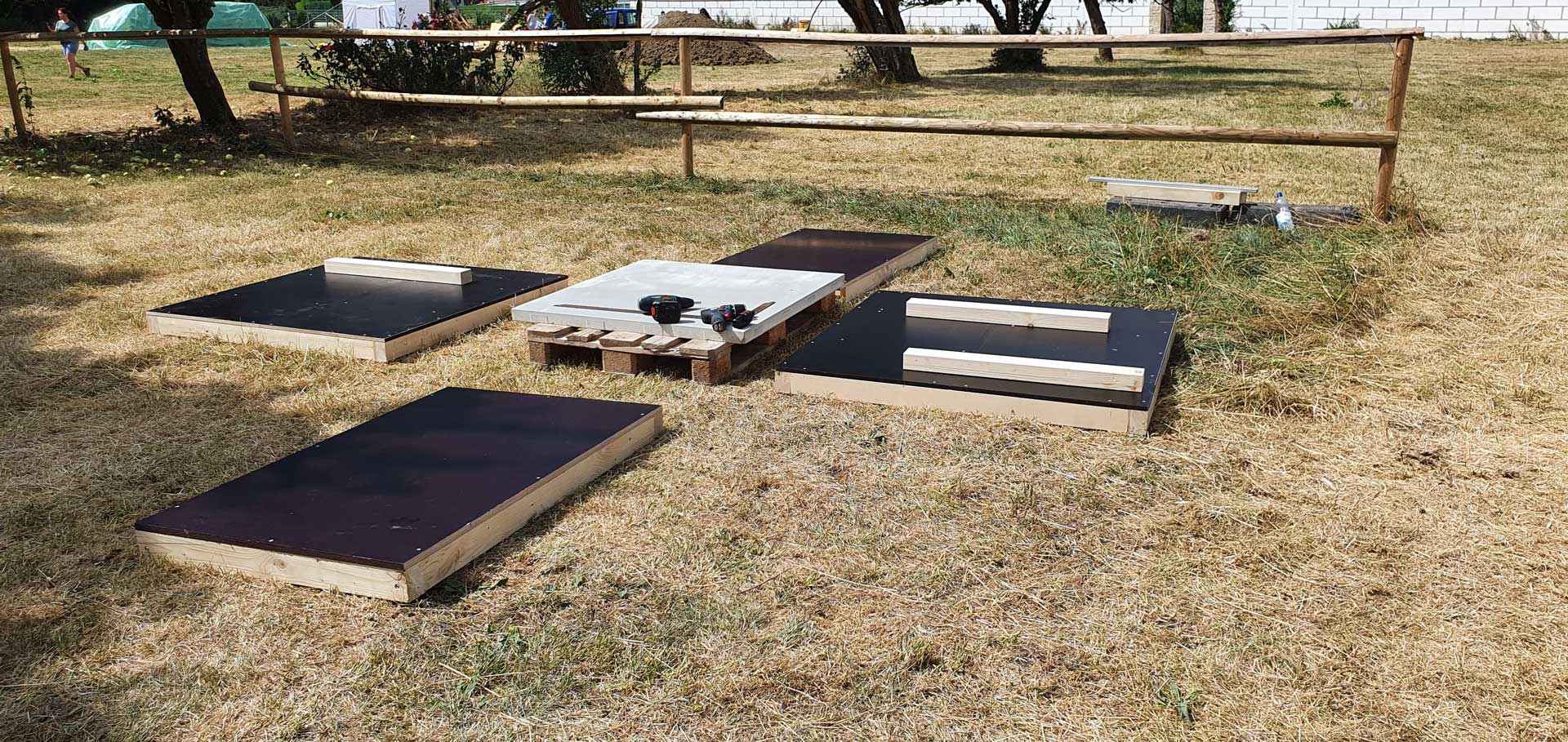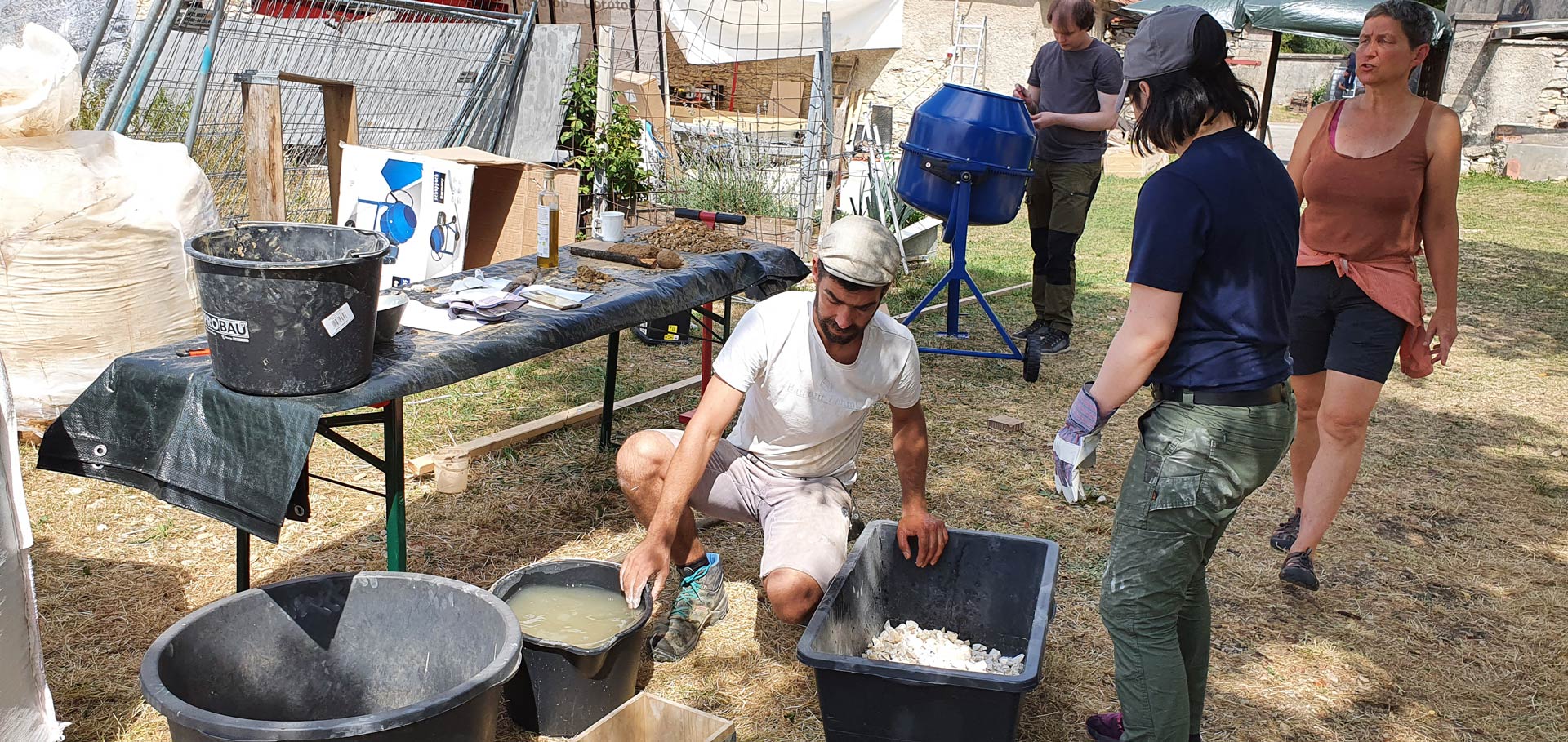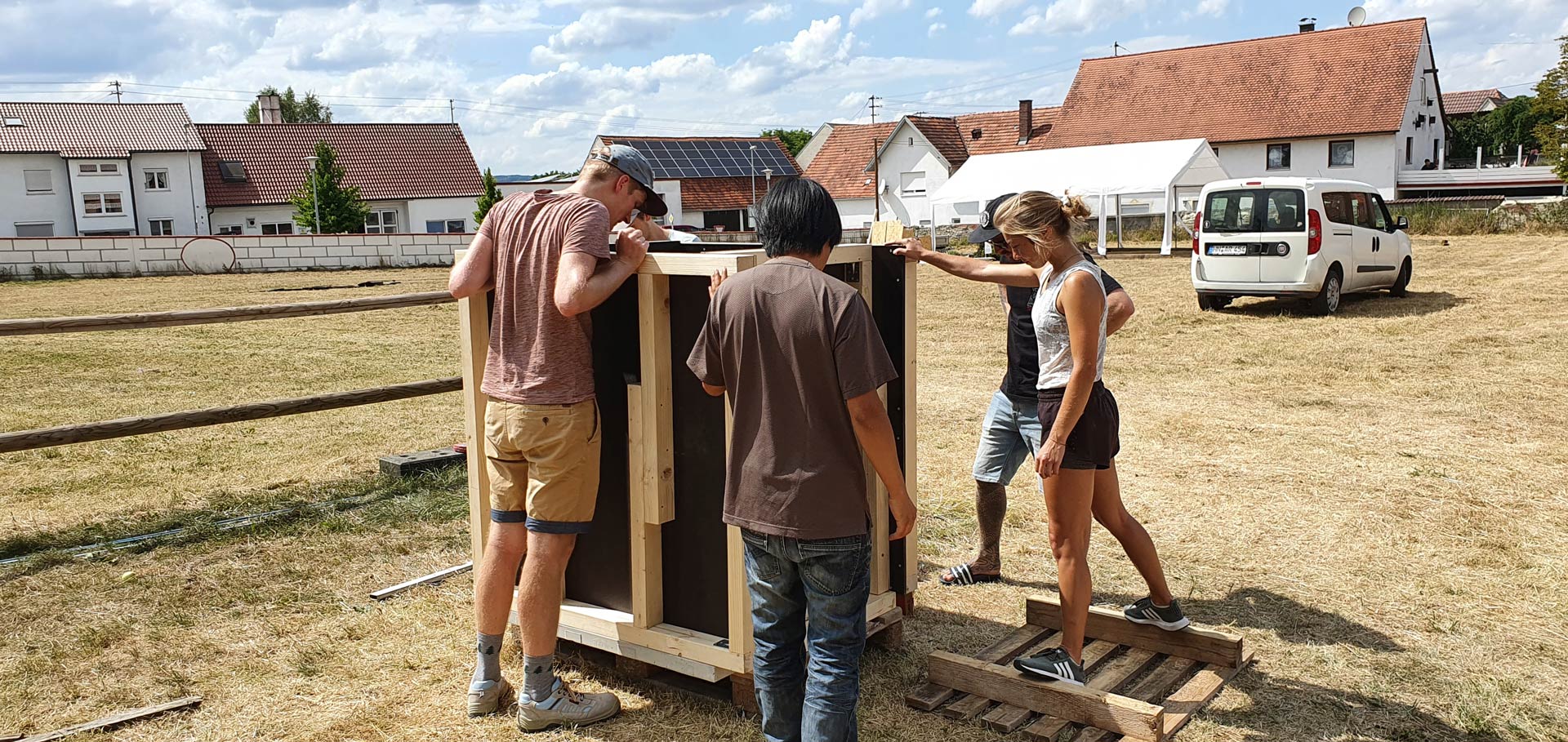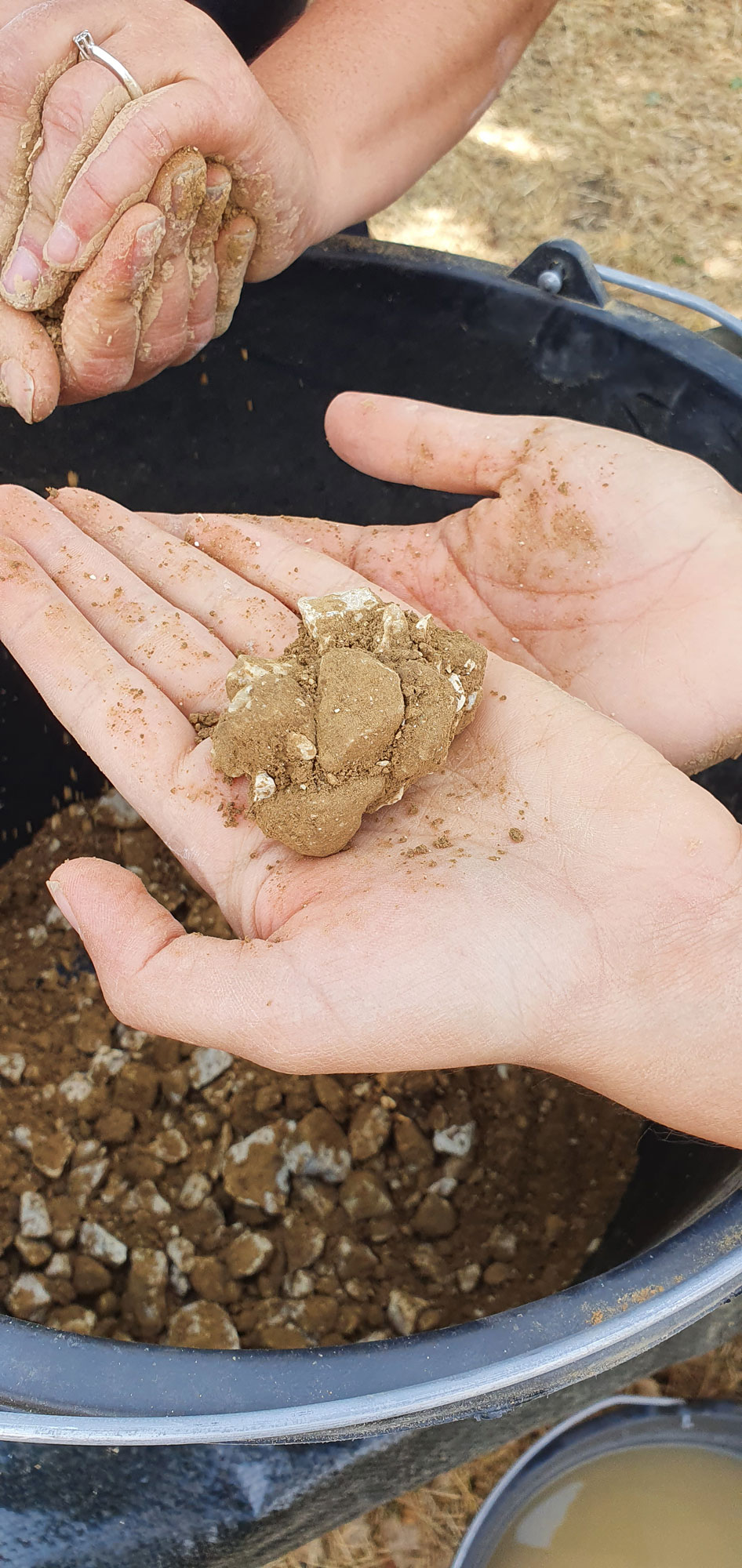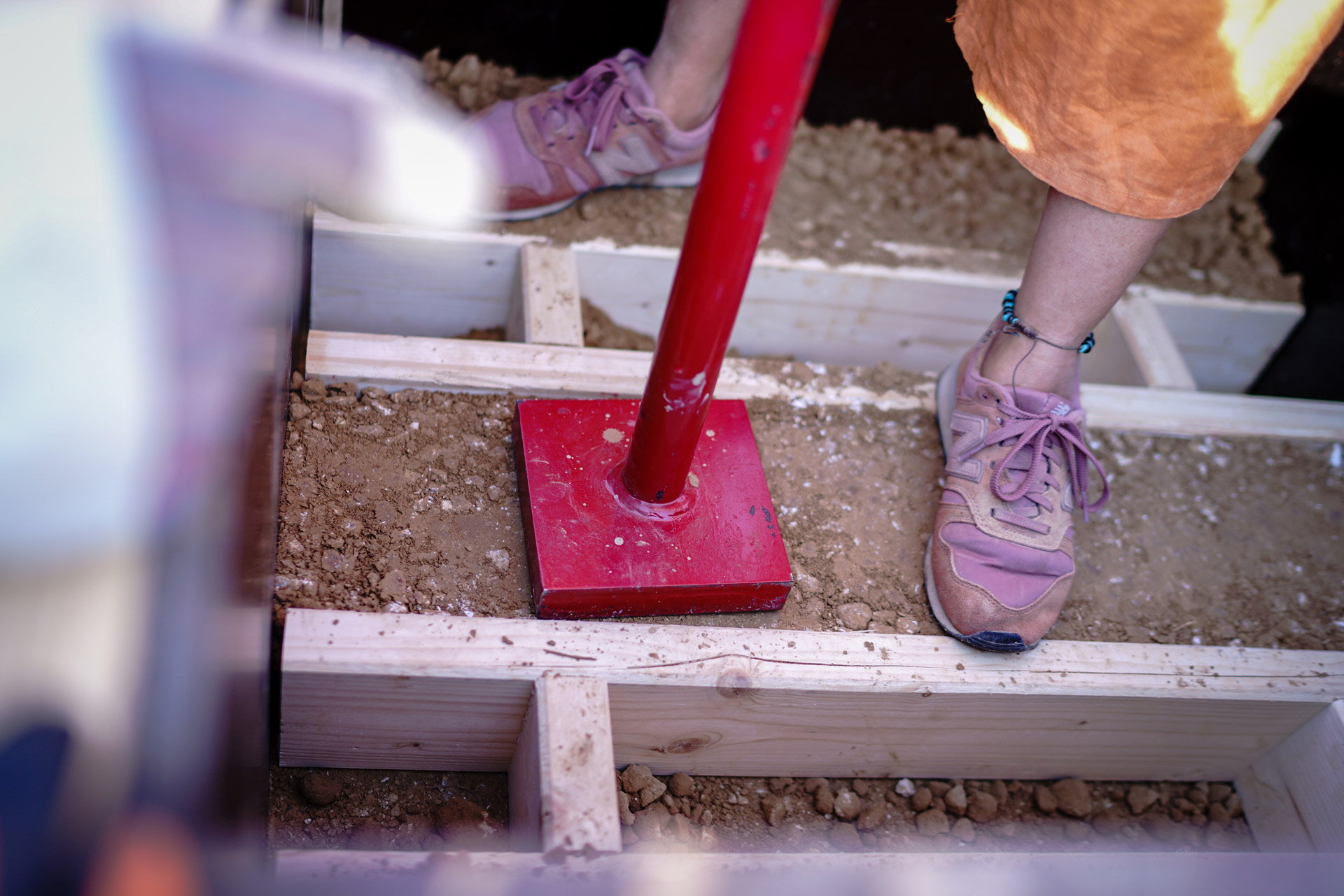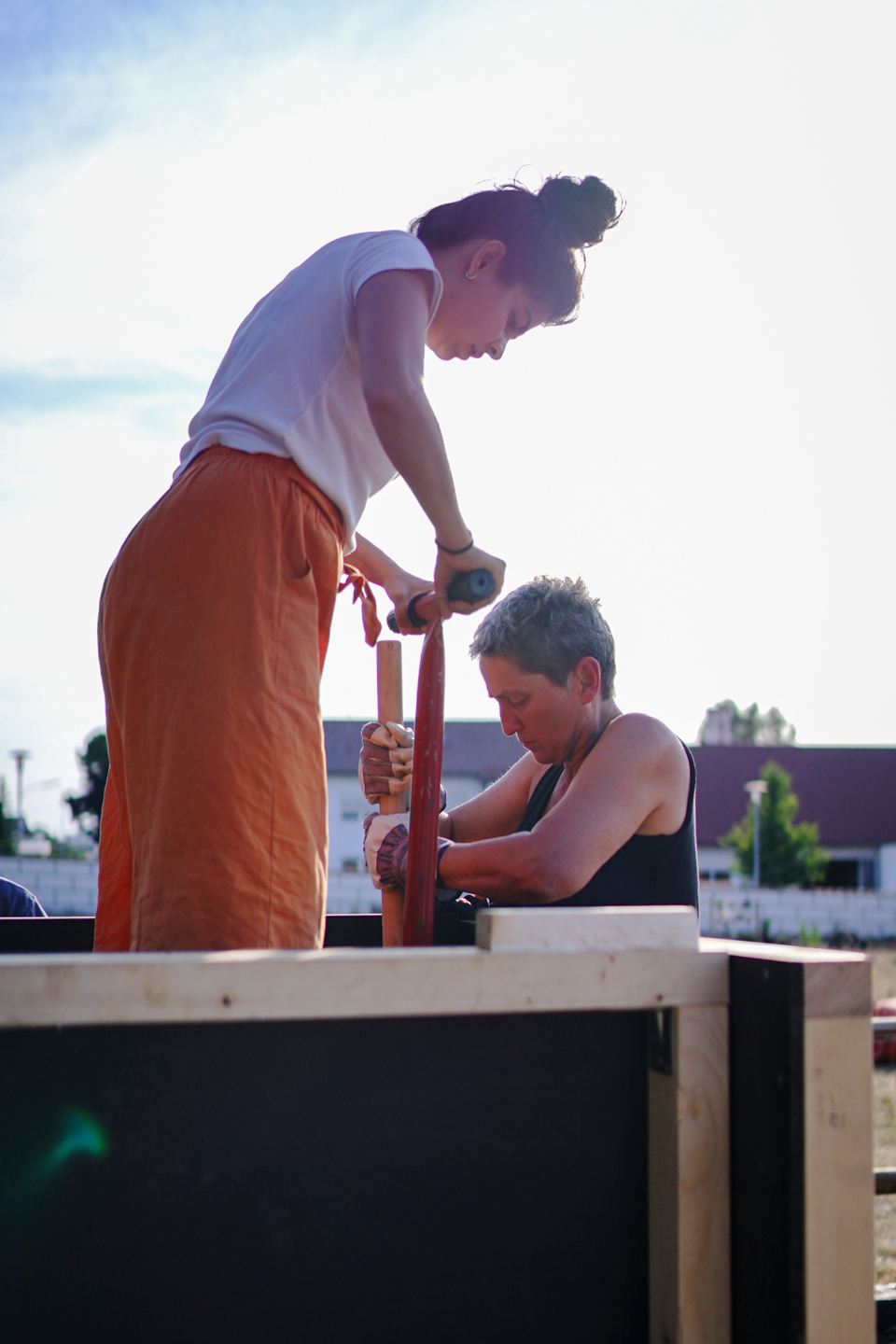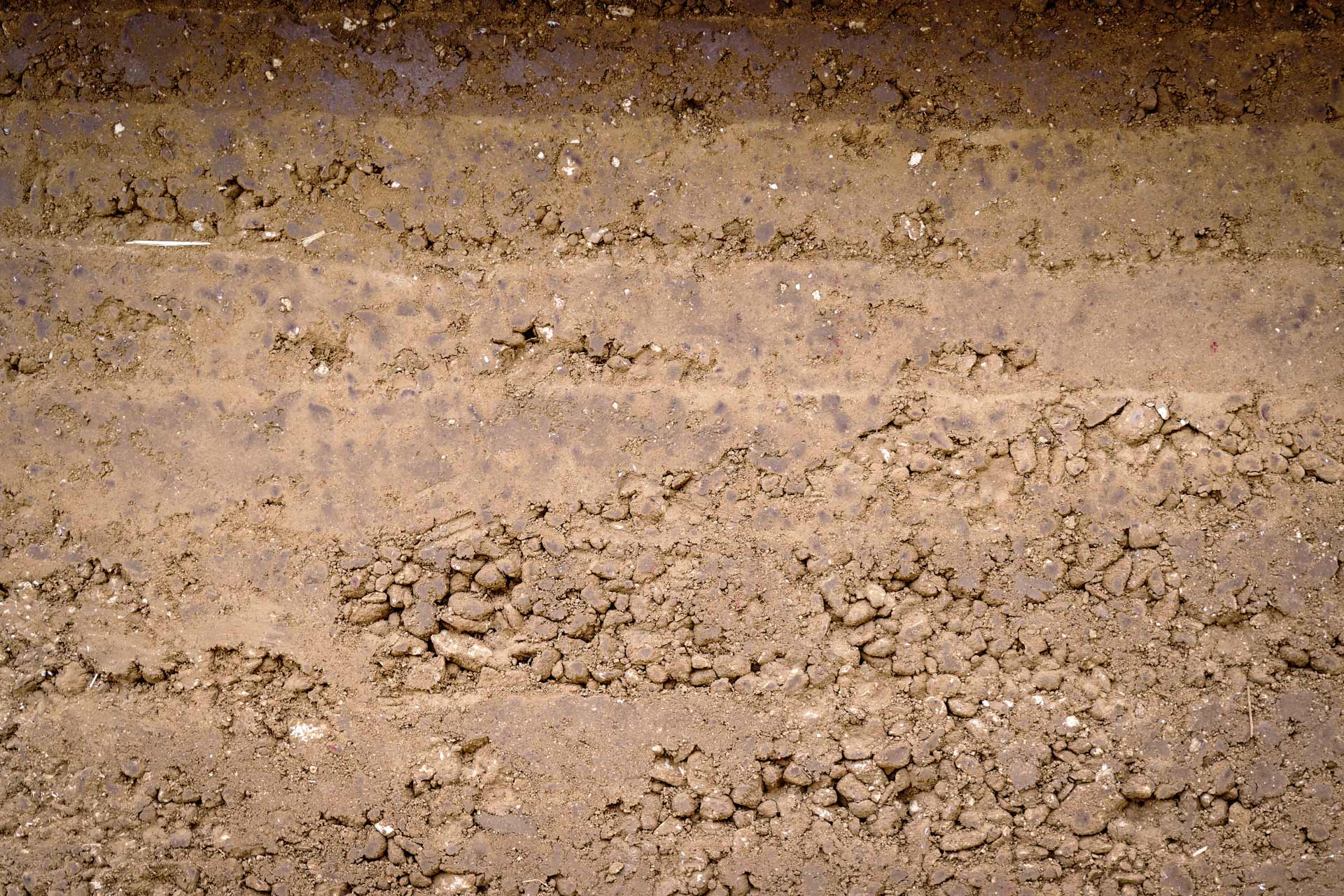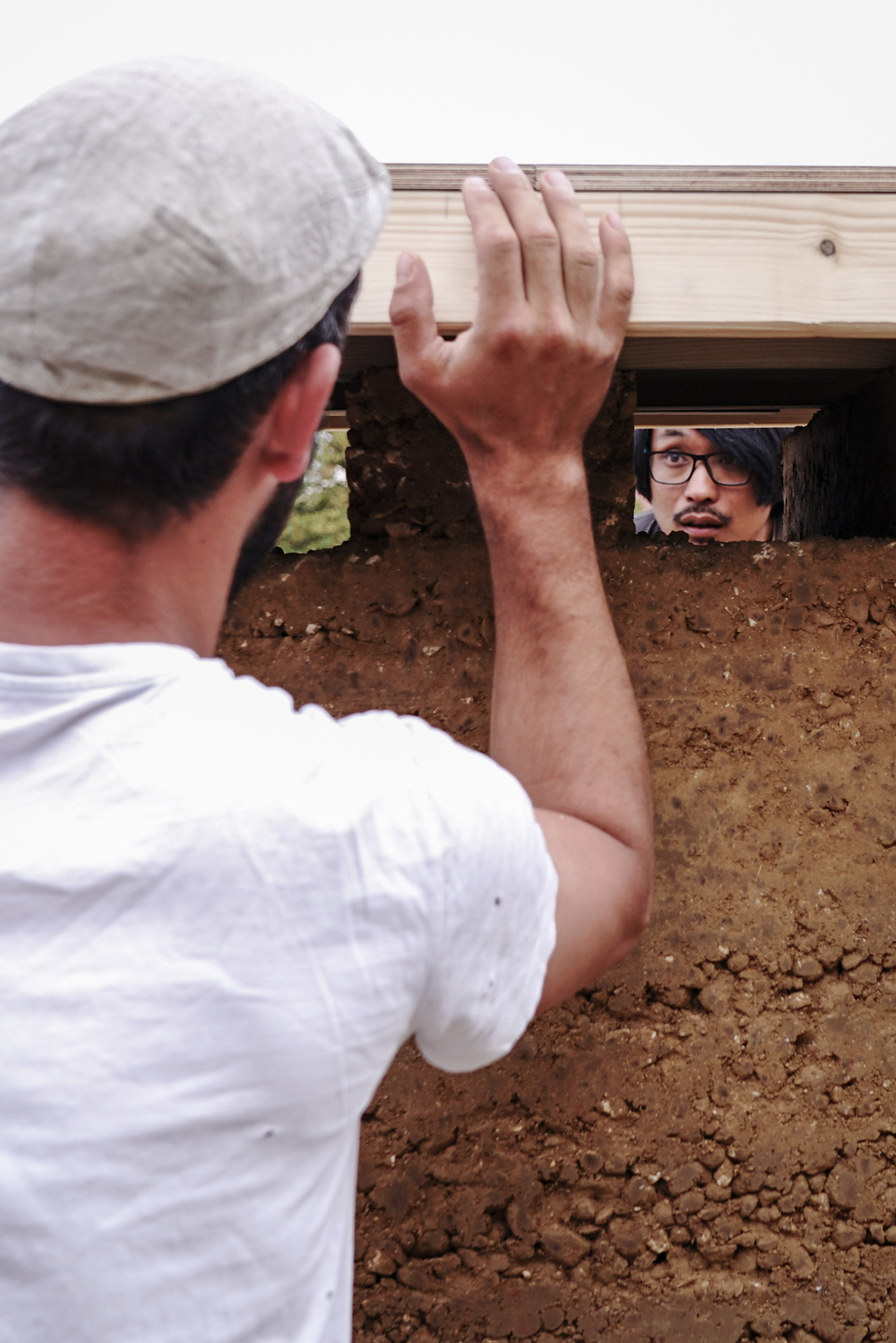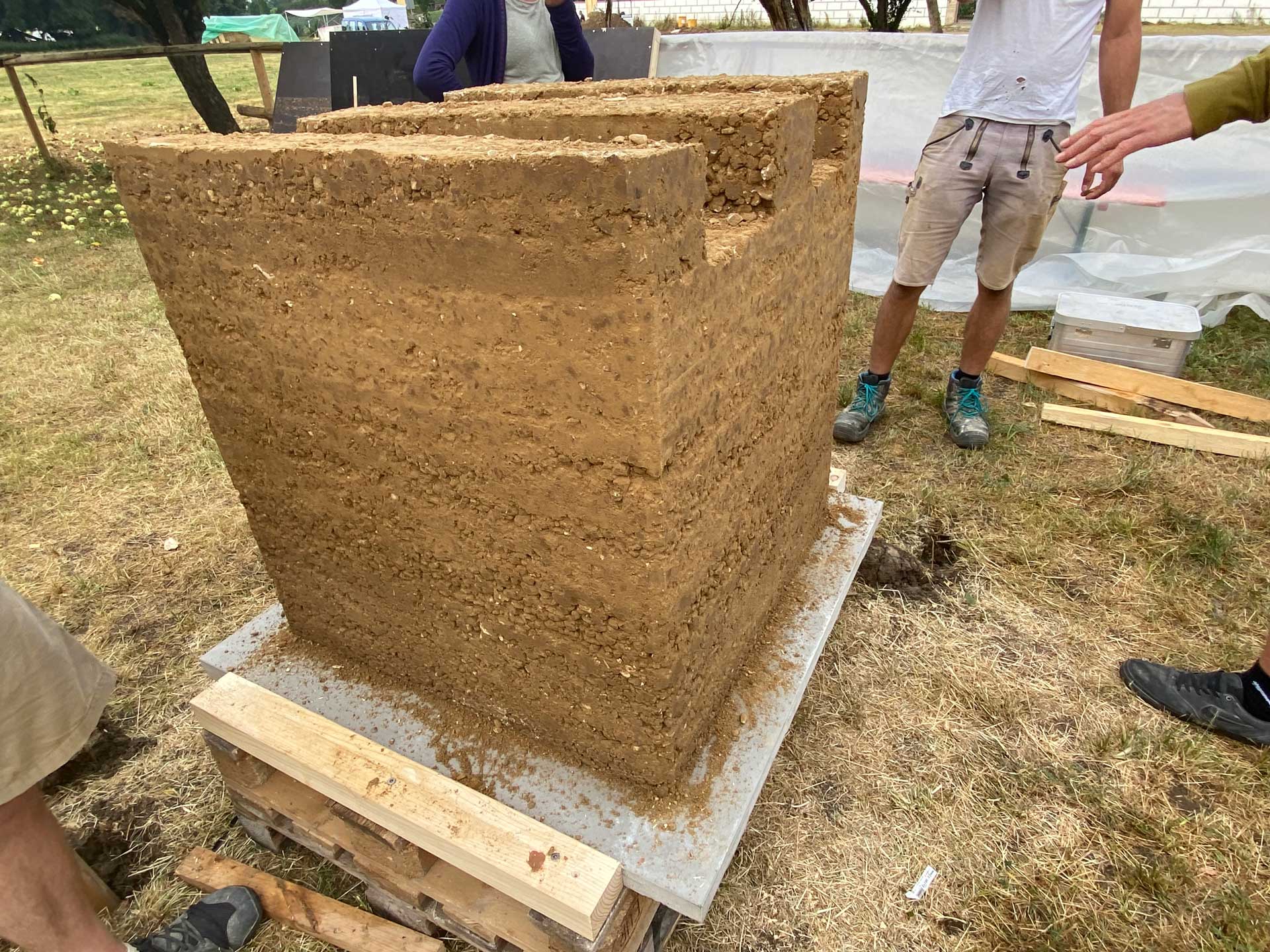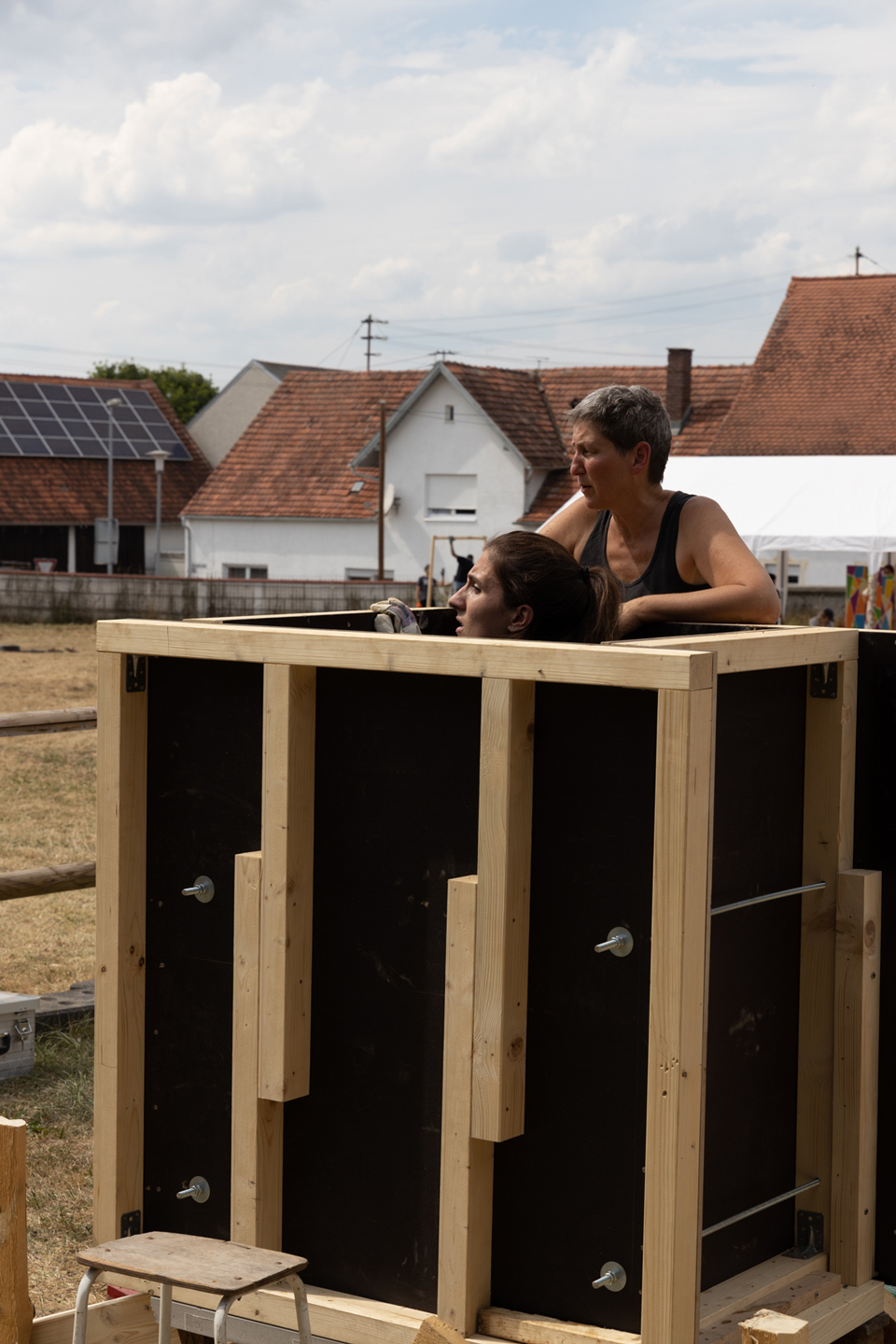Practical experience: Building a Rammed-Earth Block, Oberbechingen, Germany
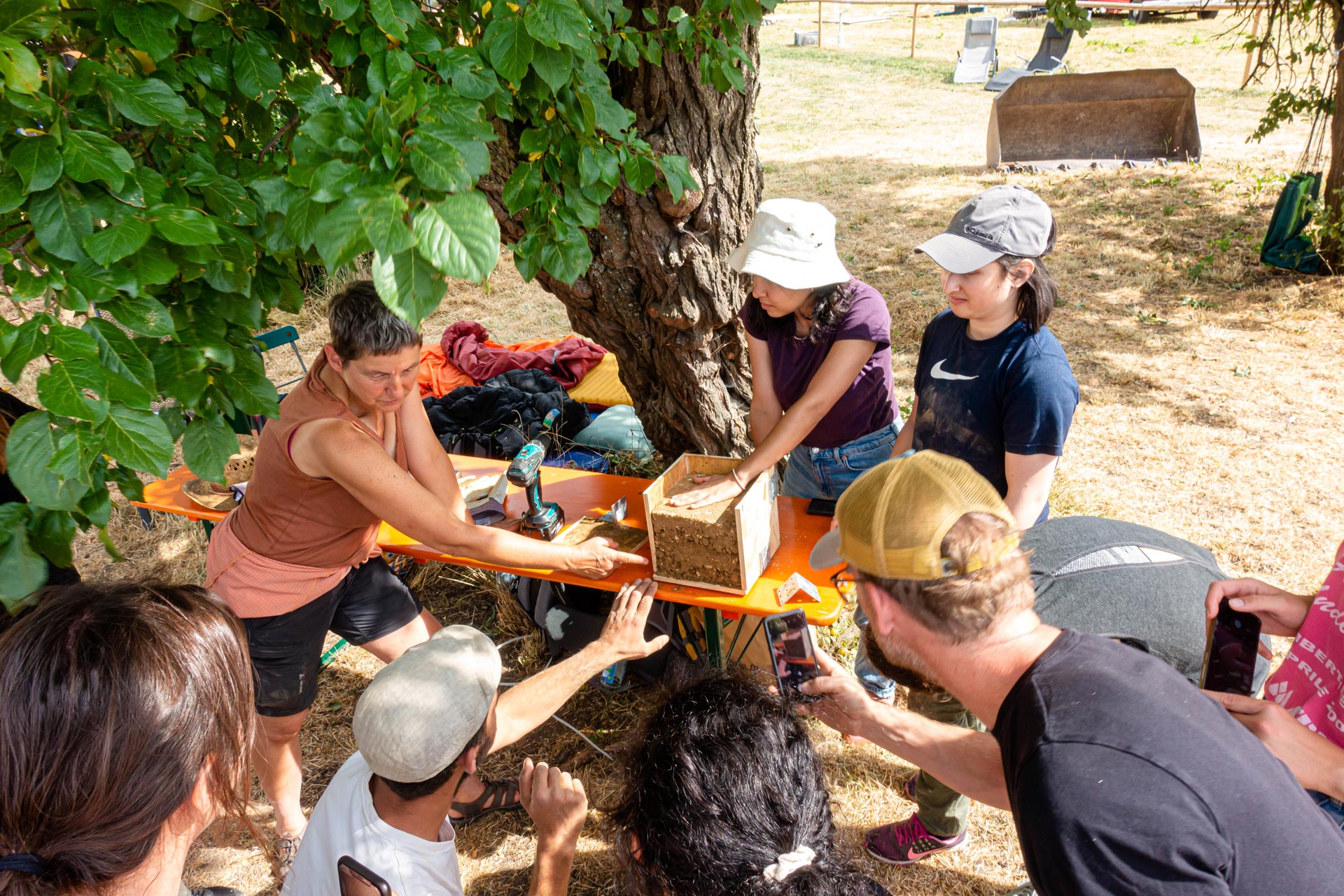
The aim of the project was to build a large wood-fired oven in which, for example, pizza could be baked for a large number of people. In order to operate the oven at the right working height, it needs a fireproof base. For this we had chosen the natural material rammed earth, also to have the opportunity to experience the material and how to handle it. For rammed earth, building clay, silt, sand and gravel are required, which are then mixed, layer by layer and without other aggregates is rammed into a formwork.
So much for the theory.
In our practice, it has been shown that one must first learn how to handle the raw material. This starts with the right choice of constituents, which must be well chosen in terms of texture and grain size. Fortunately, we had Tim Langer with us on site, who successfully guided us thanks to his experience.
Immediate mixing of our material was not possible. We first had to sift the pre-purchased gravel by hand so that only the correct grain sizes could be used. The building clay "powder", which was also purchased, had to be mixed with the appropriate amount of water to form a mass so that it would "stick" well to the stones. This proved to be rather difficult, as the building clay was very "lean," a technical term we learned from expert Tim Langer. The road to success was a long one: it was a matter of finding the right mixture of gravel, sand, building clay and water: Stability fits when a lump formed from it passes a drop test. When the best recipe was determined, the next step was to place a portion of the mixture in a small mold, where it was compacted and left to dry. The next day it was clear that the mixture worked, the small rammed-earth block not only looked good, but also did not break out at any point. Now tackling the whole thing on a large scale presented us with new challenges. The concrete mixer provided proved unsuitable, manual work with shovel, sieve and buckets and mixing on the tarp was exhausting, but then brought success. Watch the making of >
In a formwork, professionally constructed for us by Tim, the "block" then grew up layer by layer - and not too much at once - as the base for the pizza oven. For this purpose, too, work by hand, tamping with suitable tools, was the better solution than an electric ram. After 2.5 days of strenuous work, we proudly unveiled "our" beautiful rammed-earth block.
Our conclusion: it takes experience and tremendous expertise to work successfully with rammed earth. You have to listen carefully to these experts - those who really work with rammed earth - right from the planning stage of a project and ensure for this purpose that not only the material meets the requirements from the very beginning, but also that the design of the object is in harmony with the given conditions.
